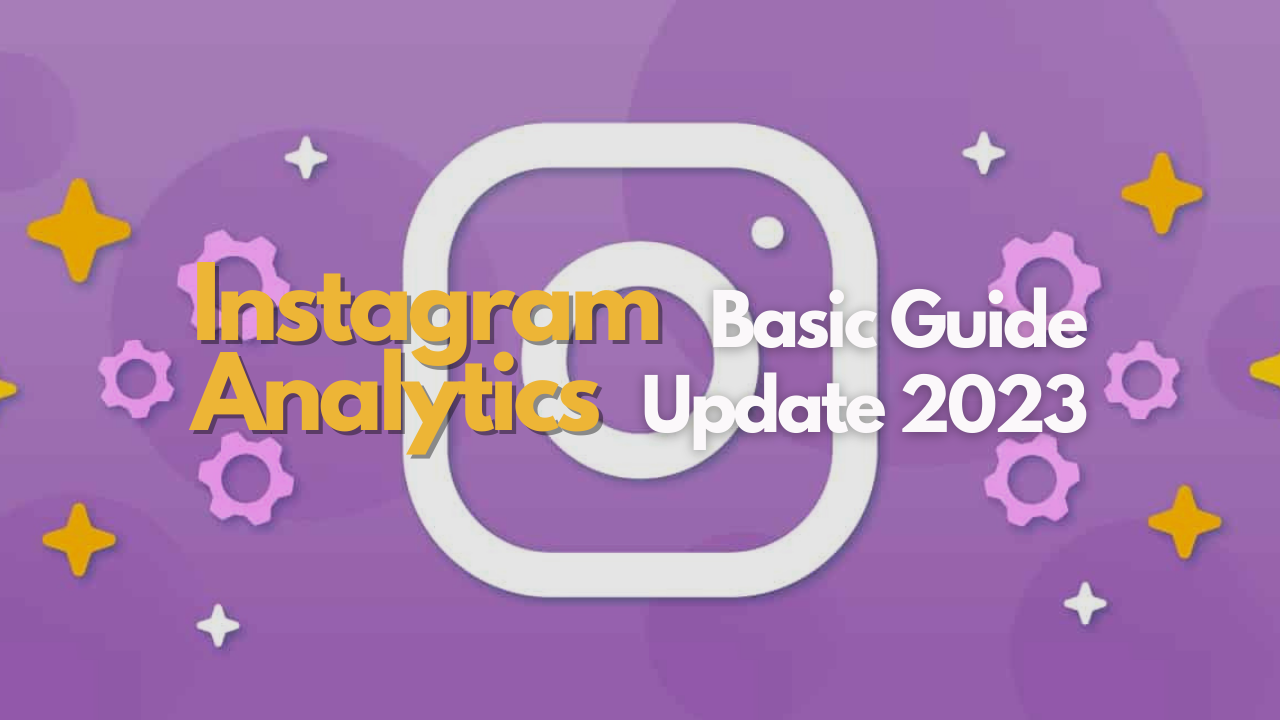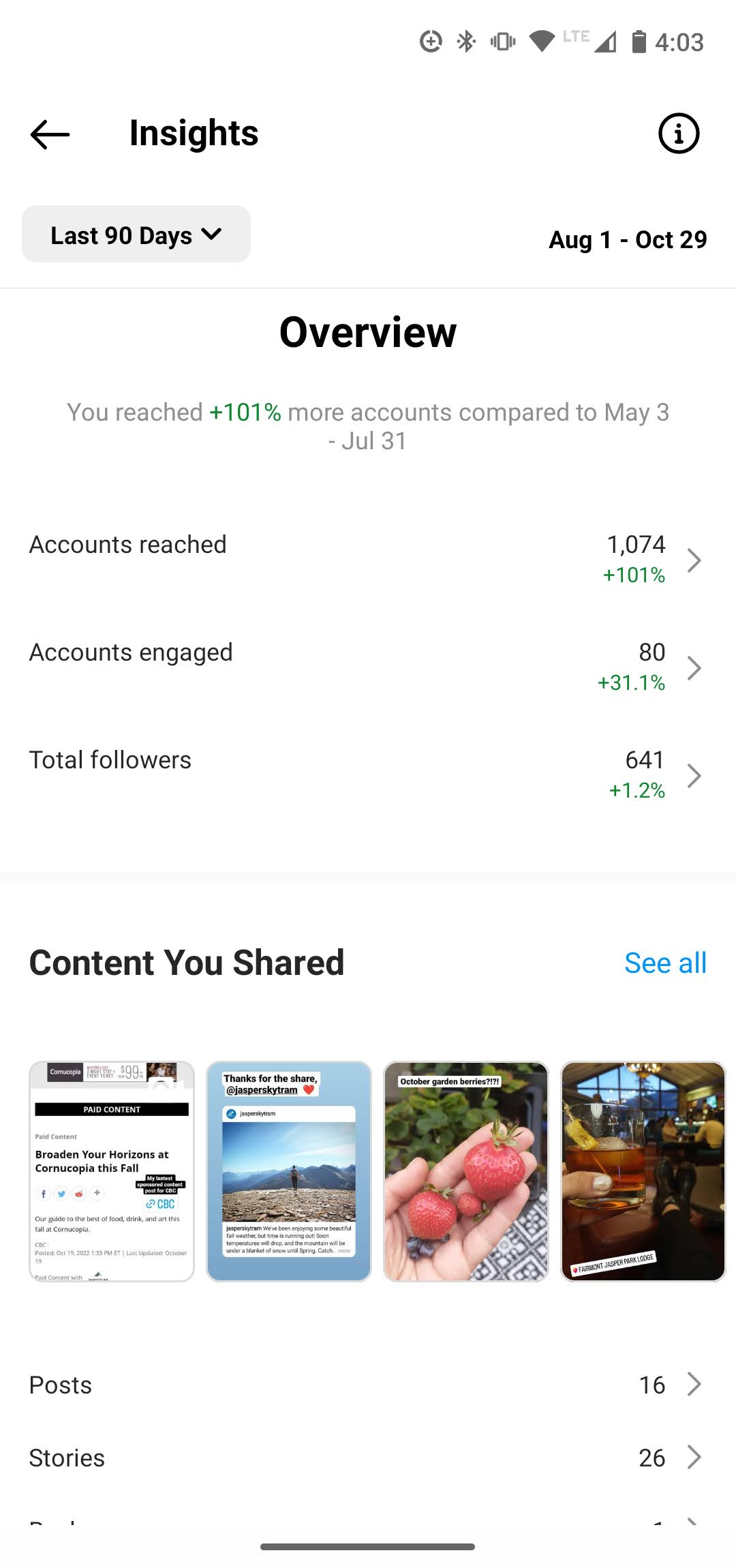Continue with the basic guide to Instagram Analytics.
The basis of every effective Instagram marketing campaign is Instagram analytics. Data is the basis for all successful marketing decisions. There is plenty of data to inform you what is and isn’t effective on Instagram, as well as give ideas for creative approaches you might want to try. Where can you find the Instagram analytics data to help you optimize your plan? What does it all mean, then? In this blog, we break everything down and give you a basic guide to Instagram Analytics.
How to access Instagram Analytics
Here’s how to access Instagram analytics data on your phone or PC.
On mobile  Using Instagram Insight is an option for mobile users. Instagram Insights provides basic Instagram analytics for free within the Instagram app. Although there is no way to convert the data into a report, it provides you with a good overall summary of your Instagram results.
Using Instagram Insight is an option for mobile users. Instagram Insights provides basic Instagram analytics for free within the Instagram app. Although there is no way to convert the data into a report, it provides you with a good overall summary of your Instagram results.
- Go to your profile on the Instagram app, tap Professional dashboard.
- Tap See all next to Account insights.
- View a list of your content’s followers, engagements, overall reach, and shared content. You can select the timeframe you want to view from the top menu.
- Tap the right arrow next to the appropriate category to dig deeper into any of these stats.
On desktop
Navigating through analytics on your phone is perfect for rapid, on-the-go tracking of your Instagram metrics. But, when you want to evaluate your data and progress over time, compare outcomes to your work on other social platforms, or generate a social media report, desktop is better. Here’s how to access your desktop Instagram analytics.
Although there isn’t a desktop version of the main Instagram Insights tool, you can get some simple post-by-post statistics from your Instagram feed.
A pop-up panel displaying the total likes, comments, saves, direct message shares, profile visits, and reach will appear when you click View insights next to a post in your feed.
Instagram analytics tools for 2023
Keyhole
Along with the standard Instagram data, Keyhole specializes in hashtag analytics and keyword tracking.
It can be used to track promotions, user-generated content, and Instagram contests in real time. It also evaluates the effectiveness of branded hashtags. When you collaborate with influencers, tracking Instagram statistics is also a beneficial tool.
Minter.io
A desktop and mobile analytics tool called Minter.io offers in-depth data for Instagram. It monitors daily audience trends and hourly detail.
Benchmarking your basic Instagram analytics against a cohort of relevant accounts is a feature that is interesting. Additionally, you will be able to monitor the top followers and even the filters that work best for your content.
Squarelovin
You can measure particular KPIs using Squarelovin’s Instagram analytics tool. This help to see how your efforts are paying off and what kind of content are most effective.
Panoramiq Insights
You can analyze and report on follower and activity metrics with this simple but useful Instagram analytics tool. Moreover, it also provides thorough data on your posts and stories on Instagram. Your reports can be exported to PDF or CSV.
FAQs about Instagram analytics
How can I access Instagram analytics in 2023?
You need a Business or Creator account to see Instagram analytics.
Exists a free Instagram analyzer?
Instagram’s free native analytics tool is called Instagram Insights. The Instagram app’s built-in analytics tool offers information on your account’s performance, including reach, engagement, followers, and Instagram ads. It does, however, have several drawbacks that may make it not the best tool for social marketers that take their business seriously.
What distinguishes Instagram metrics from Instagram analytics?
Metrics are distinct pieces of information, such as the number of likes received by a certain post or the number of followers you have. Analytics is based on analysis, as the name implies. Analytics, therefore, center around monitoring and evaluating outcomes across time.



